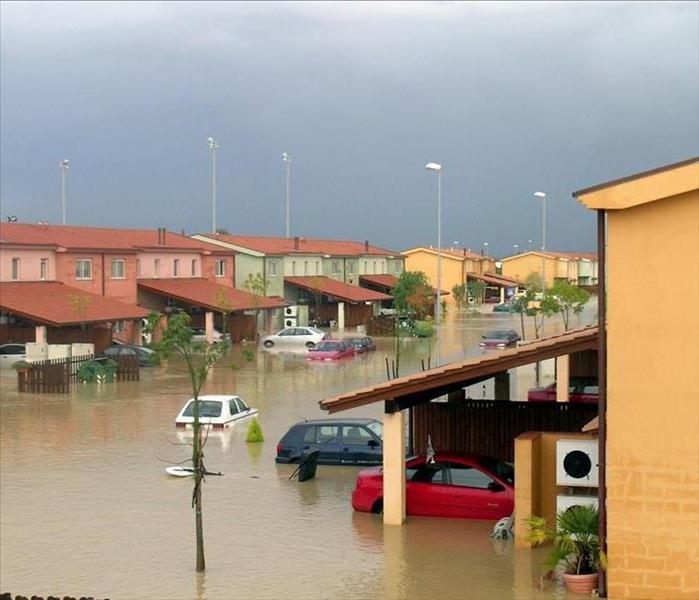11 Improvements You Can Make To The Outside Of Your Home To Prevent a Flood
7/13/2021 (Permalink)
 Flooding is the most common and costly natural disaster in the United States and can happen anywhere at any time.
Flooding is the most common and costly natural disaster in the United States and can happen anywhere at any time.
11 Improvements You Can Make To The Outside Of Your Home To Prevent a Flood
Owning a home is one of the most significant investments you can make in your life. Your home is your sanctuary. You work hard to provide a home and a future for yourself and your loved ones. Why risk damaging or losing your home when bad weather strikes?
Flooding is the most common and costly natural disaster in the United States and can happen anywhere at any time. Just one inch of water can cause significant damage to your home and require expensive repairs. While you can't prevent a natural disaster, you can prepare your home in advance to minimize the damage. Below are a few tips you can use to prepare your home for bad weather.
First, you need to determine the Base Flood Elevation (BFE) for your home. The BFE is the computed elevation to which the floodwaters are anticipated to rise. You need to know your BFE because it is used for flood plan management regulations in your community. Your local flood plan manager can help you find your BFE.
- Improve your yard's grading. Water needs to drain away from your foundation or basement walls.
- Add water-resistant exterior sheathing on walls and seal them to prevent shallow flooding from damaging your home.
- If possible, repair sidewalks, patios, decks, and driveways that have shifted over the years. These repairs prevent water from pooling too close to your home.
- When landscaping your yard and gardens, pick plants and vegetation that will minimize soil erosion.
- Secure your yard items. Unsecure yard items can become hazardous during a flood or storm. They can be swept away or damaged by floodwaters, or they can also be swept into your home and cause more damage. Secure your yard items by anchoring them, attaching them to sturdier structures, or storing them indoors until the bad weather has subsided.
- Consider getting window well covers so that water and does not accumulate in your window wells.
- Make sure your downspouts extend three to six feet and drain away from your home.
- Use a rain barrel to catch rain runoff.
- Regularly clean and maintain your gutters and eavestroughs. Remove any leaves, twigs, and other blockages in your gutters or eavestroughs, so rainwater does not pool in your gutters or overflow onto your roof.
- Keep storm drains near your home clear of leaves, twigs, and other debris.
- Repair or replace your roof if shingles are deteriorating or missing.
Remember, some of these tips may work better together than others. Not all of these options work together; you should always consult with a professional such as your insurance agent, an architect, an engineer, a contractor, or other experts in construction before making modifications to your home.
If your home floods-don't panic! Call SERVPRO Of Pickens County. Our highly trained crews and state-of-the-art technology will make it "Like it never even happened." We will restore your home to preloss condition in no time. Give us a call at (864) 855 - 3993. We are available 24/7, 365 days a year.



 24/7 Emergency Service
24/7 Emergency Service